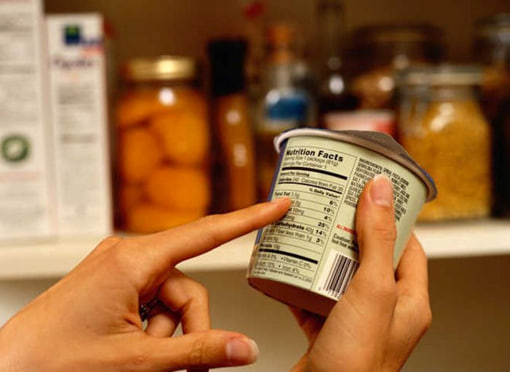Decoding food labels
FOOD labels mention the contents of packaged products. But can they be taken at face value? Flagging the issue of misleading claims on labels that can adversely impact consumers’ choices, the Indian Council of Medical Research (ICMR) has issued a set of dietary guidelines.
It points out the glaring example of the deceptive nature of ‘sugar-free’ foods. While these products may seem like a boon for diabetics or those watching their weight, they could be loaded with fats, refined cereals and hidden sugars, significantly altering their nutritional profile. Similarly, packaged fruit juices may have a meagre 10 per cent fruit pulp, with the rest containing added sugars and other additives. The guidelines underscore the importance of scrutinising labels beyond the attractive health claims. Terms like ‘natural’, ‘whole grain’ and ‘organic’ may not guarantee such qualities in the product. Manufacturers often exploit these terms to capitalise on consumer preferences for healthier options, while the actual contents may fall short of expectations. The ICMR also questions the nutrition claims — terms like ‘low calorie’ or ‘high fibre’ are vague assertions unless backed with concrete facts.
Unfortunately, the ICMR’s advisory does not specifically address the needs of food allergy patients. For example, accurate labelling of gluten-free products is crucial to managing celiac disease and ensuring the wellbeing of the patients as even traces of gluten in foodstuffs can trigger adverse reactions in them. The medical body must advocate greater transparency and adherence to regulatory standards in gluten-free labelling. Misleading food labels contribute to the perpetuation of faulty dietary patterns, exacerbating obesity and other problems. The ICMR’s call to action is clear: consumers must exercise caution and diligence while making healthier choices for themselves and their families

Crucial (adjective) – very important, of great consequence, of the essence, critical, high-priority महत्वपूर्ण
-
Address (verb) – tackle, see to, deal with, confront, grapple withसुलझाना, निपटाना
-
Often (adverb) – frequently, in many instances, repeatedly, again and again
अक्सर
-
Adherence (to) (noun) – Attachment or commitment to a person, cause, or belief. अनुपालन
-
Exercise (verb) – use, employ, make use of, utilize, avail oneself of
प्रयोग करना
-
Vague (adjective) – Unclear, Imprecise, Indefinite, Ambiguous, Equivocal, Nebulous, Elusive, Inexplicit
अस्पष्ट
-
Deceptive (adjective) – deceitful, false, misleading, fraudulent, dishonest
भ्रामक
-
Point out (phrasal verb) – indicate, mention, note, highlight, emphasize
इशारा करना
-
Adverse (adjective) – detrimental, negative, disadvantageous, unfavorable, harmful
प्रतिकूल
-
Misleading (adjective) – deceptive, false, fallacious, deceiving, specious
भ्रामक
-
Assertion (noun) – declaration, statement, claim, affirmation, Contention
दावा
-
Adversely (adverb) – unfavorably, badly, adverse
प्रतिकूल/ विपरीत ढंग से
-
Dietary (adjective) – Of or relating to diet.
खुराक-संबंधी
-
Transparency (noun) – clarity, limpidity, clearness, plainness, distinctness
पारदर्शिता
-
Trigger (verb) – Initiate, start, prompt, activate, cause, spark off, set off
शुरू करना
-
Capitalize on (phrasal verb) – cash in on, take advantage of, make use of, profit by, exploit
लाभ उठाना
-
Concrete (adjective) – Tangible, solid, real, substantial, definite
ठोस
-
Alter (verb) – change, make changes to, make different, make alterations to
बदलना
-
Flag (verb) – Indicate, signal, highlight, mark, signal
सूचित करना
-
Exploit (verb) – Use (a situation) in an unfair or selfish way.
अनुचित लाभ उठाना
-
Glaring (adjective) – obvious, evident, clear, blatant
सुस्पष्ट
-
Diligence (noun) – carefulness, thoroughness, sedulousness, attentiveness,
लगन/ कर्मठता
-
Exacerbate (verb) – aggravate, worsen, inflame, intensify, exasperate
बढ़ाना / बिगाड़ देना
-
Fall short of (phrase) – fail to meet an expectation
-
Back (verb) – support, endorse, sanction, approve of
समर्थन करना
-
Decode (verb) – convert (a coded message) into intelligible language.
समझाना, व्याख्या करना
-
Boon (noun) – Benefit, advantage, bonus, windfall, gain, blessing
वरदान
-
Meagre (adjective) –Scanty, insufficient, inadequate, paltry, small
मामूली
-
Underscore (verb) – emphasize, underline, stress, highlight, accentuate
जोर देना
-
Wellbeing (noun) – Health, welfare, wellness, comfort
स्वास्थ्य/ भलाई
-
Faulty (adjective) – Defective, flawed, unsound, broken, imperfect
दोषपूर्ण
-
Obesity (noun) – Overweight, corpulence, fatness, plumpness, bulkiness.
मोटापा
-
Scrutinise (verb) – Examine, inspect, analyze, review, evaluate
जांचना
-
Advocate (verb) – Support, promote, champion, back, endorse
समर्थन करना
-
At face value (phrase) – accept superficially, take as it appears, assume, accept without questioning, believe
बिना जांचे
-
Additive (noun) – supplement, preservative, enhancer, ingredient, adjunct
खाद्य पदार्थों में मिलाया जाने वाला पदार्थ
-
Question (verb) – doubt, challenge, query, scrutinize, interrogate
प्रश्न करना
-
Celiac disease (noun) – a digestive disorder caused by gluten intolerance, an autoimmune disorder affecting the small intestine, gluten-sensitive enteropathy, gluten intolerance, wheat allergy
सेलिएक रोग
-
Gluten (noun) – a protein found in wheat and related grains, a composite of storage proteins, a type of protein, wheat protein, grain protein
ग्लूटेन
-
Perpetuation (noun) – continuation, preservation, prolongation, sustenance, maintenance
निरंतरता
-
Call to action (noun) – a demand for action, a prompt to act, a call for intervention, an appeal for measures, a request for action
कार्यवाही के लिए आह्वान